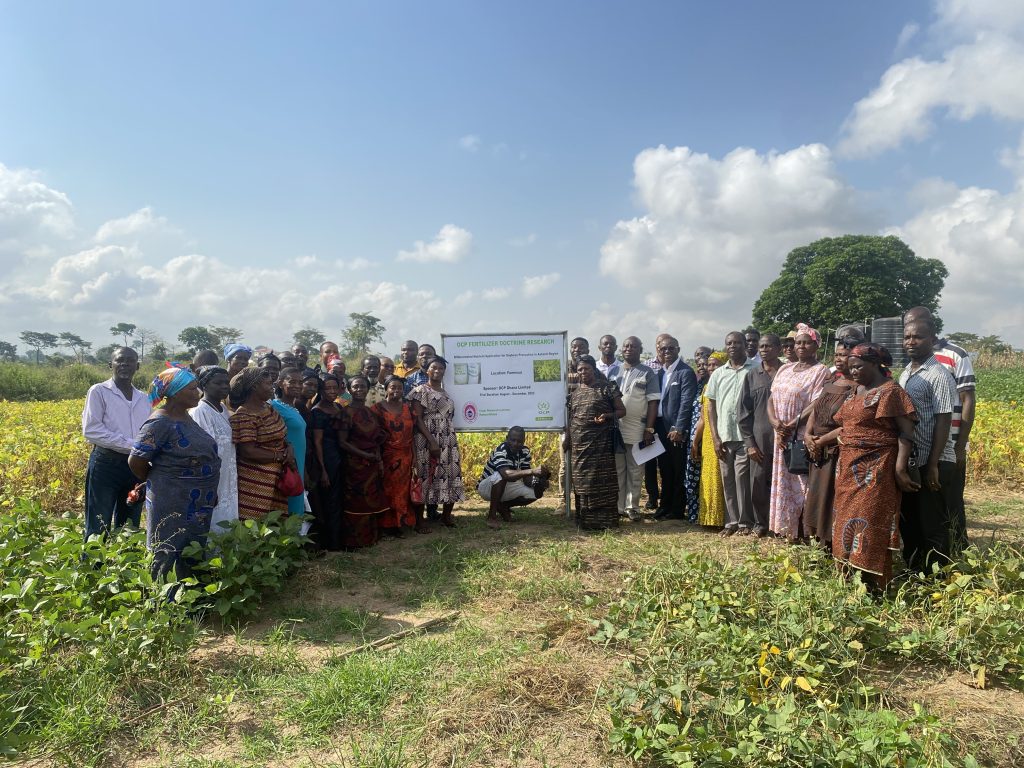By Florence Afriyie Mensah
Fumesua (Ash), Dec. 13, GNA – The Crops Research Institute of the Council for Scientific and Industrial Research (CSIR), in collaboration with OCP Ghana Limited, has unveiled fertilizer sources designed specifically for maize and soybean production.
This pioneering innovation, known as the “OCP Fertilizer Doctrine,” had the potential to significantly increase the growth, development and yields of these selected crops.
The Crop Research Institute and OCP have already explored and evaluated the effectiveness of singular fertilizer nutrient sources, of nitrogen (N), phosphorus (P), potassium (K), sulfur (S) and urea on the productivity of maize and soybean in the Ashanti (Fumesua) and Bono-East (Nkoranza) regions of Ghana.
The effects of the individual nutrient sources were evaluated in detail and compared with existing compound fertilizers that shared similar compositions.
The objective was to discern the comparative efficacy of these fertilizers on maize and soybean crops, paving the way for a more informed and tailored approach to optimizing agricultural productivity in these regions and beyond.
Dr Philip Ghanney, a Research Scientist at CRI, during a Field Day to demonstrate to farmers drawn from Kwamo the fertilizer application processes and performances on maize and soybean, said these singular fertilizers when blended worked similarly as the NPK, which were already on the markets.
He said differentiated or singular fertilizers could be tailored to the specific needs of crops, allowing for a more efficient and targeted approach to nutrient application.
This helps crops to meet the precise nutrient requirements thereby promoting healthier growth, yield, and profitability to farmers.
During the field visit, farmers observed the impact of Muriate of Potash, Rock Phosphate, Triple Superphosphate, Urea, Sulphate of Ammonia, blended NPK, and some trace elements on the growth and performances of maize and soybean.

Dr Sylvester Addy, a Legume Breeder at CSIR-CRI, highlighting the potentials of soybean, said it was an industrial grain legume that had become one of the anchor crops the Ghana government had adopted under the Planting for Food and Jobs Phase Two Initiatives.
The numerous uses and demands, according to the Researcher, had gone up both on the local and international markets, adding that, it was essential to improve upon its yield with the adoption of this fertilizer regime.
The scientists used Field Day to also educate the farmers on the distinctions between fertilizers and offered guidance on their application and distribution to maize and soybeans.
GNA